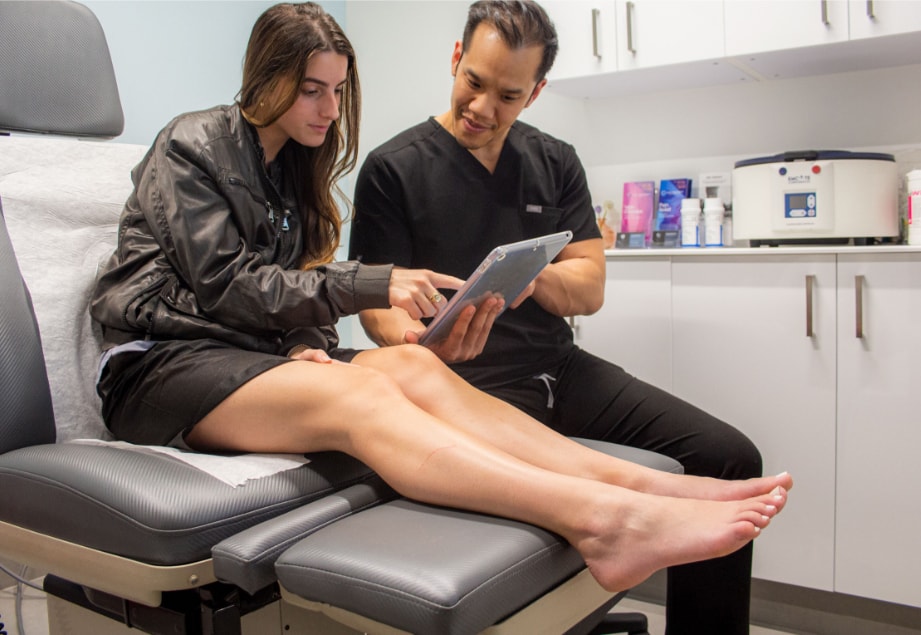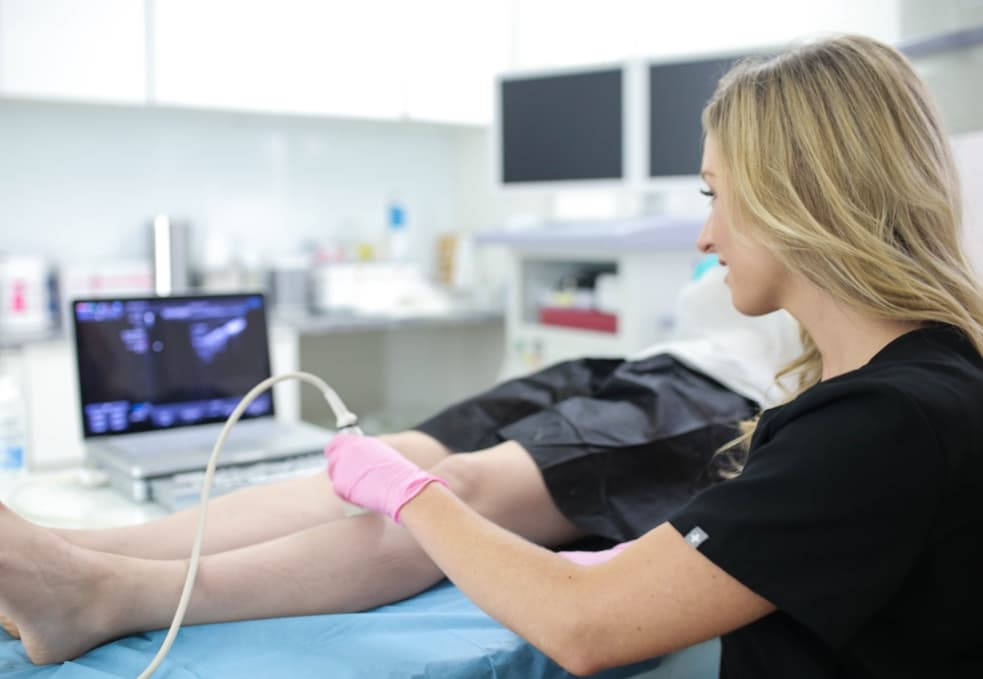How to get rid of spider veins on your legs?
If you have spider veins or varicose veins, you have probably gone through numerous at-home solutions to get rid of them. Spider veins are extremely common, especially amongst women, and they affect approximately one-third of all individuals at some point. The appearance of spider veins can lead to immense self-consciousness and social anxiety. If you have spider veins, you might feel shy about wearing revealing clothes, going to the beach, or attending events that may involve revealing your legs.
Perhaps you’ve also tried numerous at-home remedies, such as apple cider vinegar, topical creams, and witch hazel. Unfortunately, spider veins aren’t cosmetic problems, and they’re usually caused by an underlying circulatory disorder. That’s why most at-home remedies for spider veins fail. But you have nothing to worry about — you can still get rid of spider veins with minimally invasive spider vein treatments. If you contact a reliable vein doctor in Long Island, they can diagnose the root cause of your spider veins and curate a personalized treatment plan for you.
The Vein Center in Long Island is led by highly-skilled and board-certified vein doctors who specialize in cutting-edge treatments for spider veins. Our vein doctors always diagnose the root cause of spider veins to curate a comprehensive treatment plan that ensures long-lasting results. If you have spider veins, please schedule an appointment at our state-of-the-art spider vein centers in Long Island. Below, we describe how to get rid of spider veins on the legs.

Step 1: Personal consultation with a vein doctor
Your spider vein treatment starts with a personal consultation. The vein specialist examines your leg veins, reviews your medical history, discusses your symptoms, and determines the likelihood of you having underlying chronic venous insufficiency.
Step 2: The vein doctor identifies the root cause of spider veins
The vein doctor administers a duplex ultrasound test, which involves using ultrasound energy to visualize the blood flow in your leg veins. This vascular imaging test reveals if you have chronic venous insufficiency, the root cause of all vein problems.
Step 3: Treatments for underlying vein disease
If you have chronic venous insufficiency, the vein doctor performs radiofrequency ablation, laser ablation, or venaseal. These minimally invasive procedures involve using thermal energy, laser energy, or medical adhesives to collapse the diseased vein and reroute the accumulated blood into healthier leg veins.
Step 4: Minimally invasive spider vein treatment
After the primary vein treatment, the vein doctor performs a minimally invasive spider vein treatment — sclerotherapy. The vein doctor injects a sclerosant medicine into the spider veins to seal their walls shut, turning them into hardened scar tissues eventually absorbed by the body.
Step 5: Recovery and post-treatment aftercare
The sclerotherapy treatment concludes within 30 minutes, following which you can resume most of your daily activities and work. You may experience mild redness, swelling, and tenderness around the treatment areas, and the spider veins may look temporarily darker, but the side effects fade away quickly. The spider veins will fade away within 3 weeks.
What causes spider veins in the legs?
Spider veins are essentially damaged blood vessels and broken capillaries on legs with excess blood accumulation. The primary root cause of spider veins (and most other vein problems) is chronic venous insufficiency, a circulatory disorder wherein the collapse of vein valves leads to backward blood circulation and the accumulation of blood in leg veins. In healthy veins, the valves ensure one-way blood circulation to the heart, even against the force of gravity. When the vein valves malfunction, blood flows backward due to gravity and accumulates in the leg veins. The continued accumulation of blood in leg veins leads to vascular dilation and the formation of spider veins and varicose veins in the legs.
Why do you get spider veins during pregnancy?
Spider veins are extremely common during pregnancy. You have a high risk of spider veins during pregnancy for various reasons. During pregnancy, your body produces a high volume of estrogen and progesterone hormones. These hormones generally weaken the vein valves that maintain one-way blood circulation to the heart. That’s also why females have a higher risk of vein disease than men, and that’s why pregnant women have an even higher risk of spider veins. Furthermore, your body also has a higher volume of blood during pregnancy, which can increase the vascular pressure, leading to the collapse of vein valves, which, in turn, leads to spider veins and varicose veins.
How do I get rid of spider veins on my legs naturally?
You can’t get rid of spider veins on your legs naturally. You can implement some lifestyle changes to reduce the discomfort of vein disease and alleviate some of the symptoms, but the spider veins won’t go away without treatment. The following lifestyle changes can prevent spider veins from worsening:
- Wear compression stockings
- Elevate your legs while sitting down
- Engage in cardiovascular exercises — running, swimming, cycling, etc.
- Don’t sit or stand still for long periods of time
Do spider veins on legs go away?
Spider veins don’t go away on their own. If you don’t seek treatment, blood will continue accumulating in your leg veins, leading to even more symptoms of vein disease, such as leg heaviness, restless leg syndrome, leg cramps, and varicose veins. But the only way to remove spider veins is through minimally invasive spider vein treatments, such as sclerotherapy.

